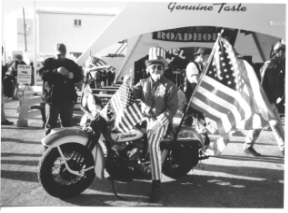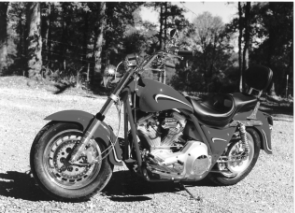SPUTHE F.A.Q.
Frequently Asked Questions
“Why is powder painting cylinders a bad idea?”
First let us consider the thermodynamic characteristics of an air-cooled aluminum cylinder with a ferrous sleeve. Combustion of the air/fuel mixture within the cylinder raises its temperature and thus its pressure, which can be made to do useful work – i.e. force a piston and connecting rod to turn a crank. Unfortunately a portion of this heat is absorbed into the piston crown, cylinder head and cylinder sleeve. The sleeve’s heat is then transferred to the aluminum cylinder. The aluminum cylinder then transfers this heat into the surrounding atmosphere. The key point to remember is that the sleeve is heated from the inside and the cylinder is cooled from the outside. Thus the highest temperature will be on the inner wall of the sleeve and the lowest temperature will be at the edge of the fins. The ferrous sleeve has a lower degree of expansion and a lesser proportion of thermal conductivity than the aluminum cylinder. This being so, there must be certain interference between the two parts when at ambient temperature, as well as the proper radiation characteristics of the cylinder at operating temperature to maintain proper fit between the cylinder and sleeve.
During the baking process of powder painting, all surfaces of the cylinder are exposed to the same air temperature. However the aluminum cylinder will absorb heat much faster than the iron liner because the cylinder has a much greater surface area – a higher rate of conductivity. The result will be that the cylinder will expand away from and separate itself from the sleeve. In the case of a shrunk-in liner, the sleeve will simply fall out. In the case of a cast-in liner, the damage may not be visibly apparent. At a minimum, the sleeve will be distorted and need to be re-honed. It is also possible that the interface between the sleeve and cylinder will be damaged, reducing the effectiveness of conductivity and the thermal dimensional stability of the cylinder.
“Why not six speeds?”
In 1997 two six-speed transmissions for Harley-Davidson Big Twins appeared in the market place. The Revtec unit sold by Custom Chrome is an engineering abomination and unworthy of consideration. The unit designed by Baker has proven to be strong and shifts well. The problem with the Baker and Baker by Jim’s transmission is not in the execution, but in the basic concept.
Motorcycle transmissions are of two basic types; main-shaft, counter-shaft and main-shaft, lay-shaft. The main-shaft, counter-shaft configuration is used on all Japanese and European motorcycles. With this arrangement one set of gears transfers power from a main-shaft to a counter-shaft. The input shaft (main-shaft) and the output shaft (counter-shaft) turn in opposite directions.
Once common on English motorcycles, Harley-Davidson is now the only manufacturer utilizing the main-shaft, lay-shaft configuration. Here, power is transmitted from a main-shaft to a concentric output shaft. Both shafts turn in the same direction. One of the speeds will be direct drive. This is achieved by locking the input and the output shafts together and since no gears are meshing power delivery is very effectual.
In the indirect gears power delivery is even less efficient than in a main-shaft/counter-shaft transmission because two pairs of gears are required to transfer power. One pair of gears transfers the power from the main-shaft to a lay-shaft; another pair of gears transfers the power from the lay-shaft to the output shaft.
On five-speed transmissions high gear is direct drive.
This is desirable because most riding is done in high gear. On six-speed transmissions fifth gear is direct. A chassis dyno will demonstrate that a bike equipped with a six-speed transmission will produce five to seven percent less power in sixth gear than in fifth gear.
Continuous running in sixth gear will increase fuel consumption and reduce engine and transmission life.
For most application the gear ratios of the six-speed transmission are not as rational as those of the five-speeds.
 Doug Rice Sputhe FXR 1998
Doug Rice Sputhe FXR 1998

“Bike Week” Daytona 1995
